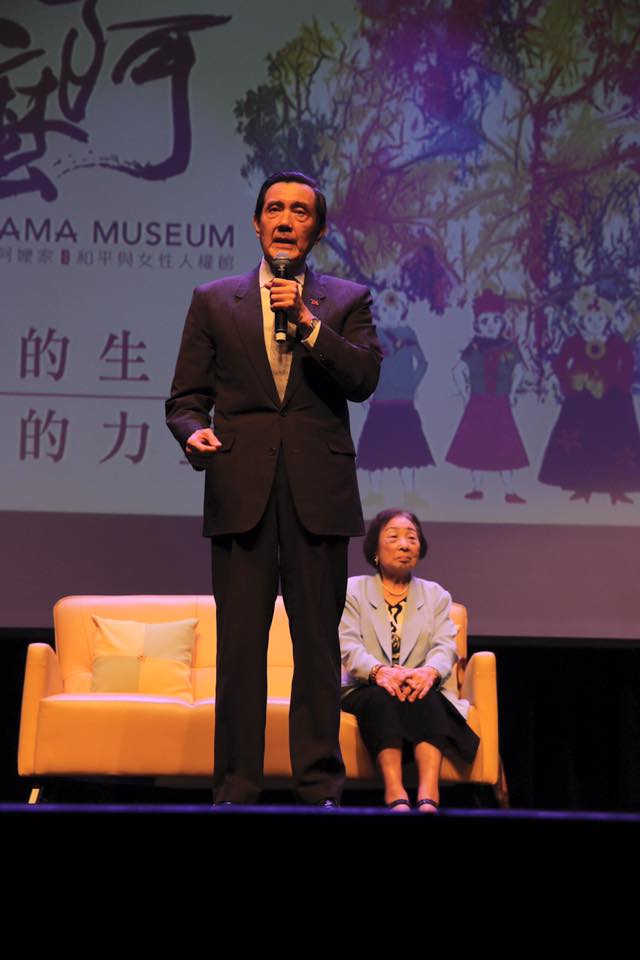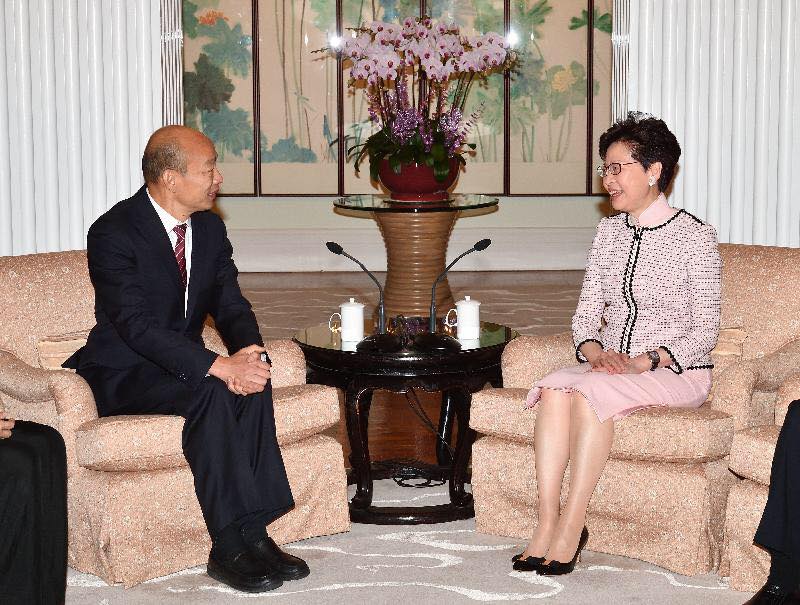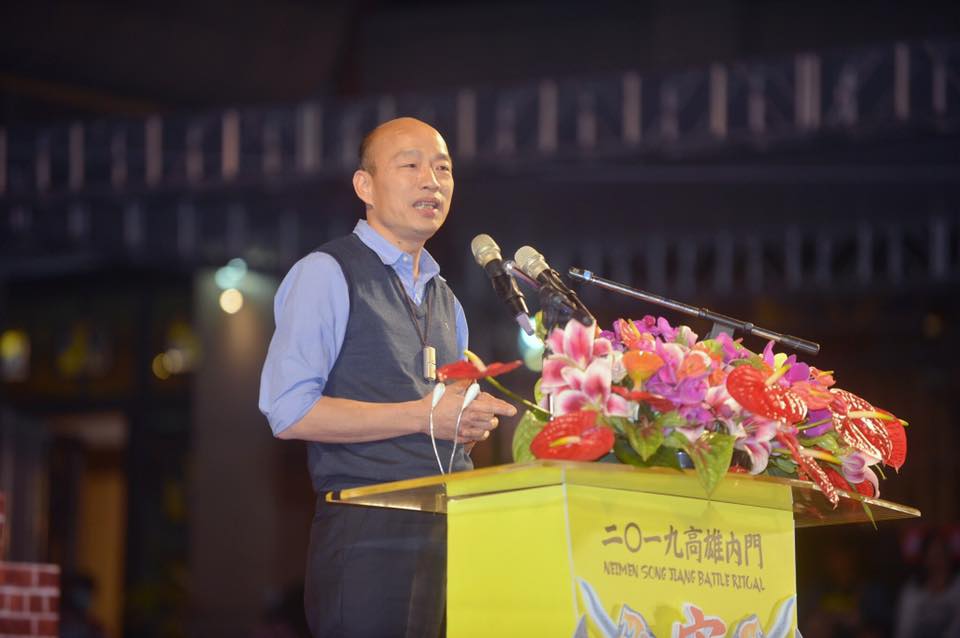by Brian Hioe
語言:
English
Photo Credit: Han Kuo-yu/Facebook
WITH A RECENT proposal by Kaohsiung mayor Han Kuo-yu to create free economic zones within Kaohsiung, one observes the unusual revival of a Ma era political idea: the establishment of special economic zones (SEZs) within Taiwan. Perhaps this should not surprise.
A number of free trade zones already exist within Taiwan, primarily on cities with ports or airports, primarily for duty-free or customs purposes. But this differs from the notion of SEZs proposed by KMT members because this is with the primary aim of attracting investment from China.
 Former president Ma Ying-jeou. Photo credit; Ma Ying-jeou/Facebook
Former president Ma Ying-jeou. Photo credit; Ma Ying-jeou/Facebook
The Ma administration touted the establishment of special economic zones within Taiwan as a means to advance the economic integration of Taiwan and China, with the hopes that their political integration would follow. The Ma administration began pushing this idea in 2013, along with advocating the signing of free trade agreements (FTAs) with China such as the ECFA and CSSTA, the latter of which later provoked public protest in the form of the Sunflower Movement in 2014.
Indeed, it proves key to remember that SEZs played a large role in the economic opening up of China following the free market reforms of the Deng period. Between 1980 and 1984, SEZs were established in Shantou, Shenzhen, Xiamen, and Zhuhai. This was expanded to other coastal cities in China in 1984, with expansion continuing in the decades since, with a number of variations on the model now including free trade zones, tech development zones, and industrial development zones.
As such, SEZs have played a large role in attempts by China to lure Taiwan into its political fold through the economy. Firstly, SEZs within China were touted as examples of the Chinese economic miracle. Likewise, one observes that Taiwanese economic ties with China are often deeply rooted in areas with SEZ presences, such as the SEZs opened to foreign investment in coastal provinces close to Taiwan such as in Fujian and Guangdong or the Pudong New Area in Shanghai. The establishment of the Western Taiwan Straits Economic Zone, which included Fuzhou, Xiamen, Quanzhou, Zhuangzhou likely in part was with the aim of facilitating closer economic ties with Taiwan.
At a certain point in its economic development, China began using SEZs as a means of expanding its economic and political clout overseas, signing deals with other countries in order to open up SEZs within their borders to Chinese investment. This took place after Chinese economic development reached the stage in which China did not only seek to open itself up to foreign investment in order to stimulate internal development but sought to use the overseas expansion of Chinese capital as a means of expanding its economic and political influence outward. This has at times led to protests in countries in which Chinese SEZs have been opened up, with the view that this has had a deleterious effect on the political sovereignty of such countries, a prominent example in recent years being Vietnam.
 Kaohsiung mayor Han Kuo-yu (left) meeting with Hong Kong Chief Executive Carrie Lam (right). Photo credit: Han Kuo-yu/Facebook
Kaohsiung mayor Han Kuo-yu (left) meeting with Hong Kong Chief Executive Carrie Lam (right). Photo credit: Han Kuo-yu/Facebook
Given this history, it is generally unsurprising that Han Kuo-yu would tout the idea of creating free economic zones within Kaohsiung or within Taiwan more broadly.
Han will likely claim that the establishment of such economic zones is not exclusively with the aim of attracting Chinese investment. However, it is to be noted that Han proposing the idea is in the wake of a trip to China, Hong Kong, and Macau in which Han brought back a number of trade deals with China. These trade deals were likely gifted to Han by China as a means of politically benefiting him and increasing his popularity within Taiwan, as attempts by China to develop an image for Han as being a politician able to win economic benefits out of China in a way that the Tsai administration is presently unable to, due to poor cross-strait relations with China.
If Han were able to open up free economic zones in Kaohsiung, it is likely that in a similar vein, the Chinese government would attempt to ensure that economic investment flows from China to Kaohsiung. Again, this would be with the aim of boosting Han’s domestic popularity within Taiwan. It is a longstanding strategy for China to try and use SEZs or heavy state subsidization as a means of pacifying what it considers restive, separatist territories, as also observed in attempts to economically pacify Hong Kong, or SEZs established in Xinjiang.
On a broader level, one notes that in past months, China seems to have revived a number of its Ma era policies aimed a winning over Taiwan. This includes not only attempting to win over Taiwan through trade deals, or the revival of the notion of establishing SEZs within Taiwan but also trying to promote the formula of “One Country, Two Systems” as a means of winning over Taiwan. With the KMT’s victories in nine-in-one elections last fall, China may have decided that it may be able to return to past policies directed toward Taiwan and not have to develop new strategies, as China sought to do following the KMT’s defeats in 2014 and 2016 elections in the years following the Sunflower Movement.
The Tsai administration has been critical of Han’s proposition to date, stating that that winning Taiwanese firms back from China, given negative effects on such firms as a result of the current US-China trade war, is a preferable idea. To this extent, the Tsai administration claims that opening up free economic zones could lead to confusion between Taiwanese and Chinese goods.
 Photo credit: Han Kuo-yu/Facebook
Photo credit: Han Kuo-yu/Facebook
Unsurprisingly for a party with its origins in the Sunflower Movement, which opposed the CSSTA trade agreement that the Ma administration intended to sign with China, the NPP has also been critical, attacking Han for his lack of any concrete economic planning, and criticizing the plan as a pro-China stratagem.
Nevertheless, it remains to be seen whether Han’s idea will be understood by the Taiwanese public as another attempt by the KMT to facilitate the economic integration of Taiwan and China or whether Han and the KMT will be successful in passing the idea off as a non-political economic trade strategy. This is anyone’s guess at present, particularly given the non-stop, adulation of Han in Taiwanese media. However, one generally expects civil society actors who to take matters into their own hands to demonstrate against this proposition of Han’s in coming weeks and months, seeing as they also demonstrated against the notion of SEZs under the Ma administration, though it remains a question as to whether they will adopt old tactics such as calling for a referendum on the idea.

